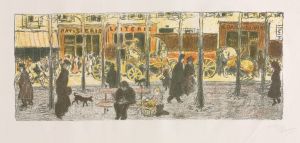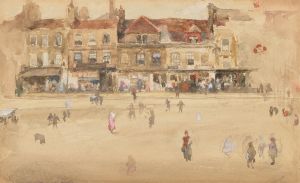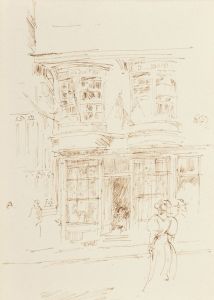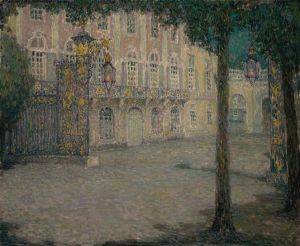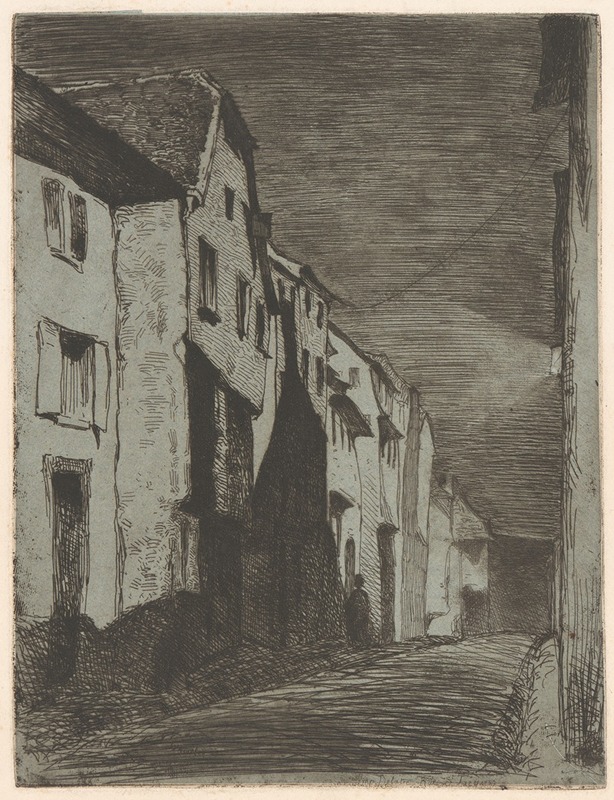
Street at Saverne
A hand-painted replica of James Abbott McNeill Whistler’s masterpiece Street at Saverne, meticulously crafted by professional artists to capture the true essence of the original. Each piece is created with museum-quality canvas and rare mineral pigments, carefully painted by experienced artists with delicate brushstrokes and rich, layered colors to perfectly recreate the texture of the original artwork. Unlike machine-printed reproductions, this hand-painted version brings the painting to life, infused with the artist’s emotions and skill in every stroke. Whether for personal collection or home decoration, it instantly elevates the artistic atmosphere of any space.
"Street at Saverne" is a painting by the American-born artist James Abbott McNeill Whistler, who is best known for his contributions to the Aesthetic Movement and his innovative approach to art. Whistler was born on July 11, 1834, in Lowell, Massachusetts, and spent much of his career in Europe, particularly in London and Paris. He is renowned for his distinctive style and his belief in "art for art's sake," which emphasized the aesthetic experience over narrative content.
The painting "Street at Saverne" was created during Whistler's early career, a period when he was exploring various artistic styles and techniques. Saverne is a town in the Alsace region of France, and Whistler's depiction of it reflects his interest in capturing the essence of a place through his art. The work is characterized by its subtle use of color and light, which are hallmarks of Whistler's style. His approach often involved a limited palette and an emphasis on tonal harmony, which can be seen in this painting.
Whistler's time in France was influential in shaping his artistic development. He was exposed to the works of the French Realists and Impressionists, which had a profound impact on his own work. Although "Street at Saverne" is not as widely known as some of his other works, such as "Arrangement in Grey and Black No. 1" (commonly known as "Whistler's Mother"), it is an important piece that showcases his evolving style and his ability to capture the mood and atmosphere of a scene.
The painting is executed with a delicate touch, using soft brushstrokes to create a sense of movement and life within the street scene. Whistler's attention to detail and his ability to convey the texture of the buildings and the play of light and shadow demonstrate his skill as a painter. The composition is carefully balanced, drawing the viewer's eye through the scene and inviting them to explore the nuances of the townscape.
Whistler's work often drew on his experiences and observations from his travels, and "Street at Saverne" is no exception. It reflects his keen interest in the everyday life and architecture of the places he visited. His ability to transform a simple street scene into a work of art that captures the viewer's imagination is a testament to his talent and vision as an artist.
Throughout his career, Whistler was known for his innovative approach to art and his willingness to challenge traditional conventions. He was a key figure in the Aesthetic Movement, which sought to prioritize beauty and aesthetic experience over moral or social themes. This philosophy is evident in "Street at Saverne," where the focus is on the visual and emotional impact of the scene rather than any specific narrative or message.
In summary, "Street at Saverne" is a notable example of James Abbott McNeill Whistler's early work, reflecting his interest in capturing the essence of a place through his unique artistic style. The painting exemplifies his commitment to the principles of the Aesthetic Movement and his ability to convey mood and atmosphere through his use of color and composition. While it may not be as famous as some of his other works, it remains an important piece in understanding Whistler's artistic journey and his contributions to the world of art.







